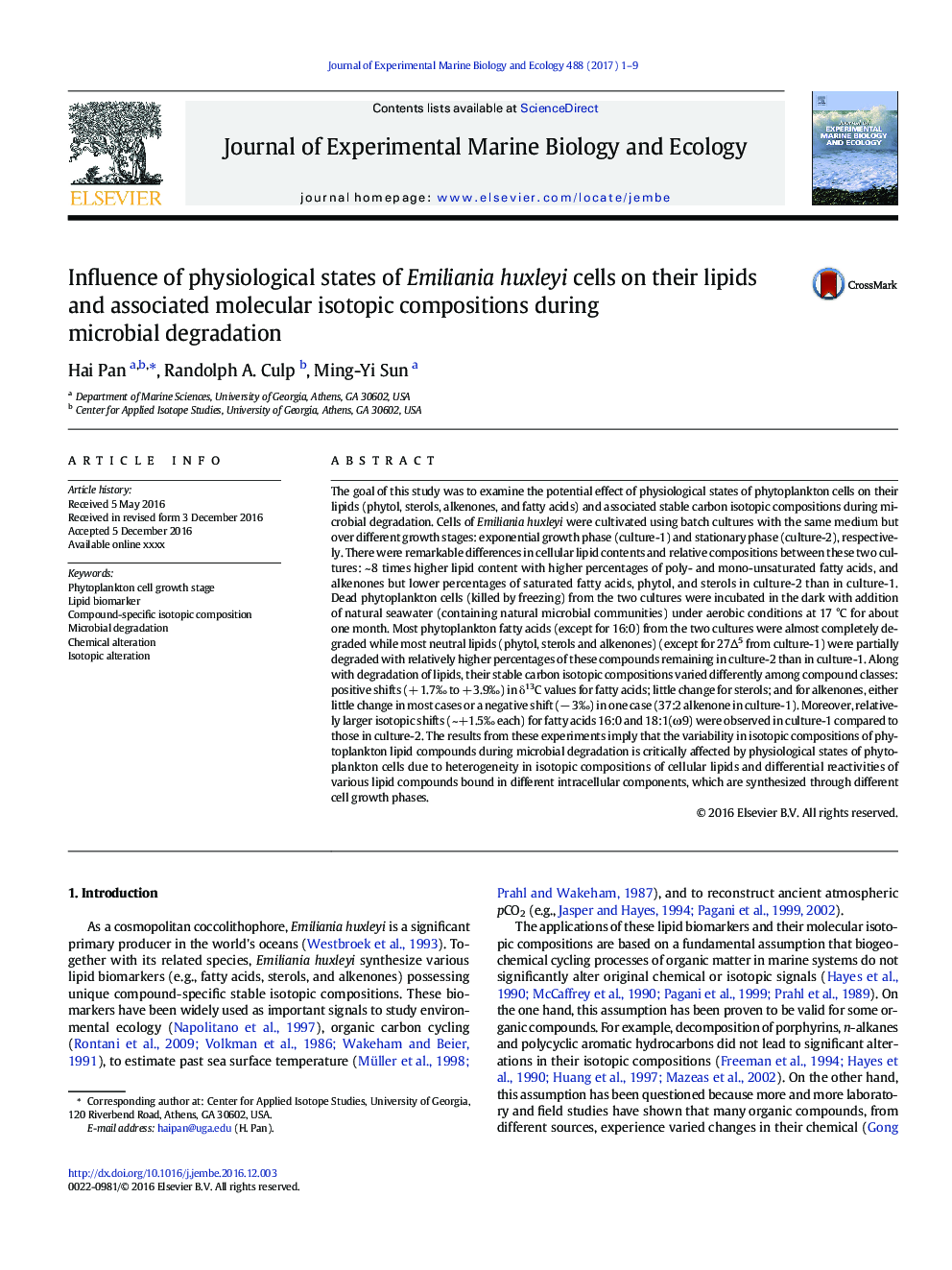| کد مقاله | کد نشریه | سال انتشار | مقاله انگلیسی | نسخه تمام متن |
|---|---|---|---|---|
| 5744557 | 1618387 | 2017 | 9 صفحه PDF | دانلود رایگان |
عنوان انگلیسی مقاله ISI
Influence of physiological states of Emiliania huxleyi cells on their lipids and associated molecular isotopic compositions during microbial degradation
دانلود مقاله + سفارش ترجمه
دانلود مقاله ISI انگلیسی
رایگان برای ایرانیان
کلمات کلیدی
موضوعات مرتبط
علوم زیستی و بیوفناوری
علوم کشاورزی و بیولوژیک
علوم آبزیان
پیش نمایش صفحه اول مقاله

چکیده انگلیسی
The goal of this study was to examine the potential effect of physiological states of phytoplankton cells on their lipids (phytol, sterols, alkenones, and fatty acids) and associated stable carbon isotopic compositions during microbial degradation. Cells of Emiliania huxleyi were cultivated using batch cultures with the same medium but over different growth stages: exponential growth phase (culture-1) and stationary phase (culture-2), respectively. There were remarkable differences in cellular lipid contents and relative compositions between these two cultures: ~ 8 times higher lipid content with higher percentages of poly- and mono-unsaturated fatty acids, and alkenones but lower percentages of saturated fatty acids, phytol, and sterols in culture-2 than in culture-1. Dead phytoplankton cells (killed by freezing) from the two cultures were incubated in the dark with addition of natural seawater (containing natural microbial communities) under aerobic conditions at 17 °C for about one month. Most phytoplankton fatty acids (except for 16:0) from the two cultures were almost completely degraded while most neutral lipids (phytol, sterols and alkenones) (except for 27Î5 from culture-1) were partially degraded with relatively higher percentages of these compounds remaining in culture-2 than in culture-1. Along with degradation of lipids, their stable carbon isotopic compositions varied differently among compound classes: positive shifts (+ 1.7â° to + 3.9â°) in δ13C values for fatty acids; little change for sterols; and for alkenones, either little change in most cases or a negative shift (â 3â°) in one case (37:2 alkenone in culture-1). Moreover, relatively larger isotopic shifts (~+1.5â° each) for fatty acids 16:0 and 18:1(Ï9) were observed in culture-1 compared to those in culture-2. The results from these experiments imply that the variability in isotopic compositions of phytoplankton lipid compounds during microbial degradation is critically affected by physiological states of phytoplankton cells due to heterogeneity in isotopic compositions of cellular lipids and differential reactivities of various lipid compounds bound in different intracellular components, which are synthesized through different cell growth phases.
ناشر
Database: Elsevier - ScienceDirect (ساینس دایرکت)
Journal: Journal of Experimental Marine Biology and Ecology - Volume 488, March 2017, Pages 1-9
Journal: Journal of Experimental Marine Biology and Ecology - Volume 488, March 2017, Pages 1-9
نویسندگان
Hai Pan, Randolph A. Culp, Ming-Yi Sun,